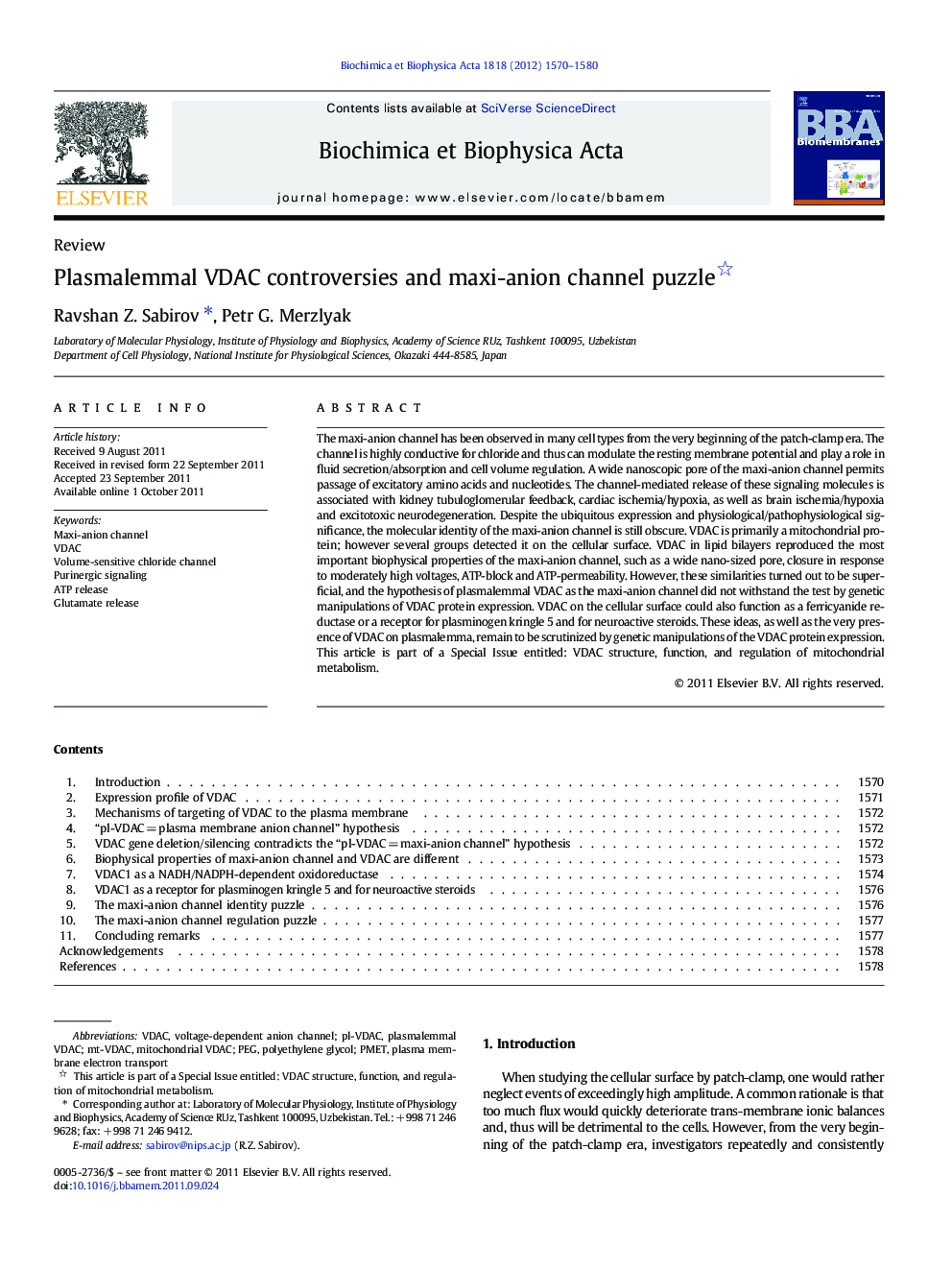| کد مقاله | کد نشریه | سال انتشار | مقاله انگلیسی | نسخه تمام متن |
|---|---|---|---|---|
| 1944486 | 1053215 | 2012 | 11 صفحه PDF | دانلود رایگان |

The maxi-anion channel has been observed in many cell types from the very beginning of the patch-clamp era. The channel is highly conductive for chloride and thus can modulate the resting membrane potential and play a role in fluid secretion/absorption and cell volume regulation. A wide nanoscopic pore of the maxi-anion channel permits passage of excitatory amino acids and nucleotides. The channel-mediated release of these signaling molecules is associated with kidney tubuloglomerular feedback, cardiac ischemia/hypoxia, as well as brain ischemia/hypoxia and excitotoxic neurodegeneration. Despite the ubiquitous expression and physiological/pathophysiological significance, the molecular identity of the maxi-anion channel is still obscure. VDAC is primarily a mitochondrial protein; however several groups detected it on the cellular surface. VDAC in lipid bilayers reproduced the most important biophysical properties of the maxi-anion channel, such as a wide nano-sized pore, closure in response to moderately high voltages, ATP-block and ATP-permeability. However, these similarities turned out to be superficial, and the hypothesis of plasmalemmal VDAC as the maxi-anion channel did not withstand the test by genetic manipulations of VDAC protein expression. VDAC on the cellular surface could also function as a ferricyanide reductase or a receptor for plasminogen kringle 5 and for neuroactive steroids. These ideas, as well as the very presence of VDAC on plasmalemma, remain to be scrutinized by genetic manipulations of the VDAC protein expression. This article is part of a Special Issue entitled: VDAC structure, function, and regulation of mitochondrial metabolism.
► The maxi-anion channel and VDAC share common biophysical properties.
► The maxi-anion channel activity does not correlate with VDAC expression.
► VDAC on the cellular surface could function as a ferricyanide reductase, as a receptor for plasminogen kringle 5 or neuroactive steroids.
► The ideas of non-channel functions of VDAC remain to be scrutinized by genetic manipulations.
Journal: Biochimica et Biophysica Acta (BBA) - Biomembranes - Volume 1818, Issue 6, June 2012, Pages 1570–1580